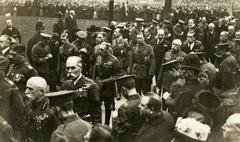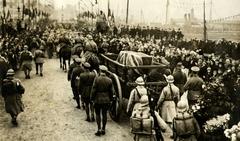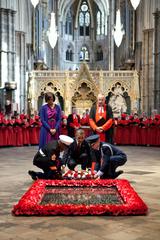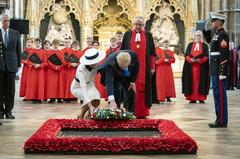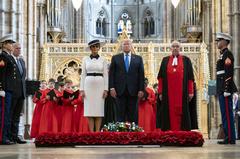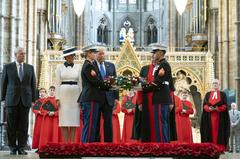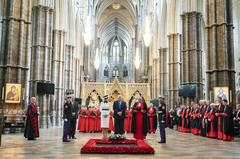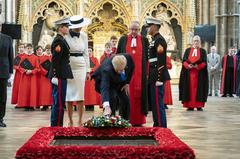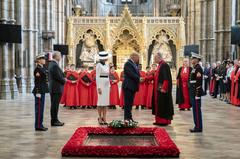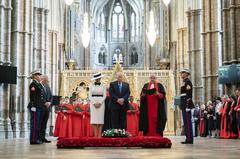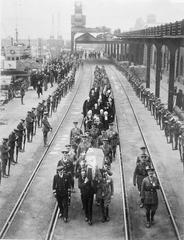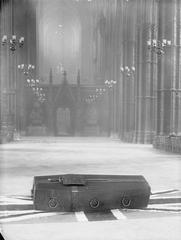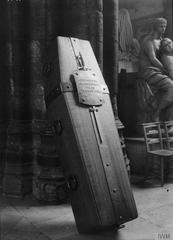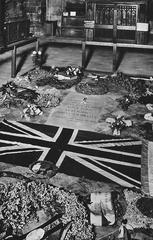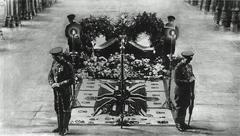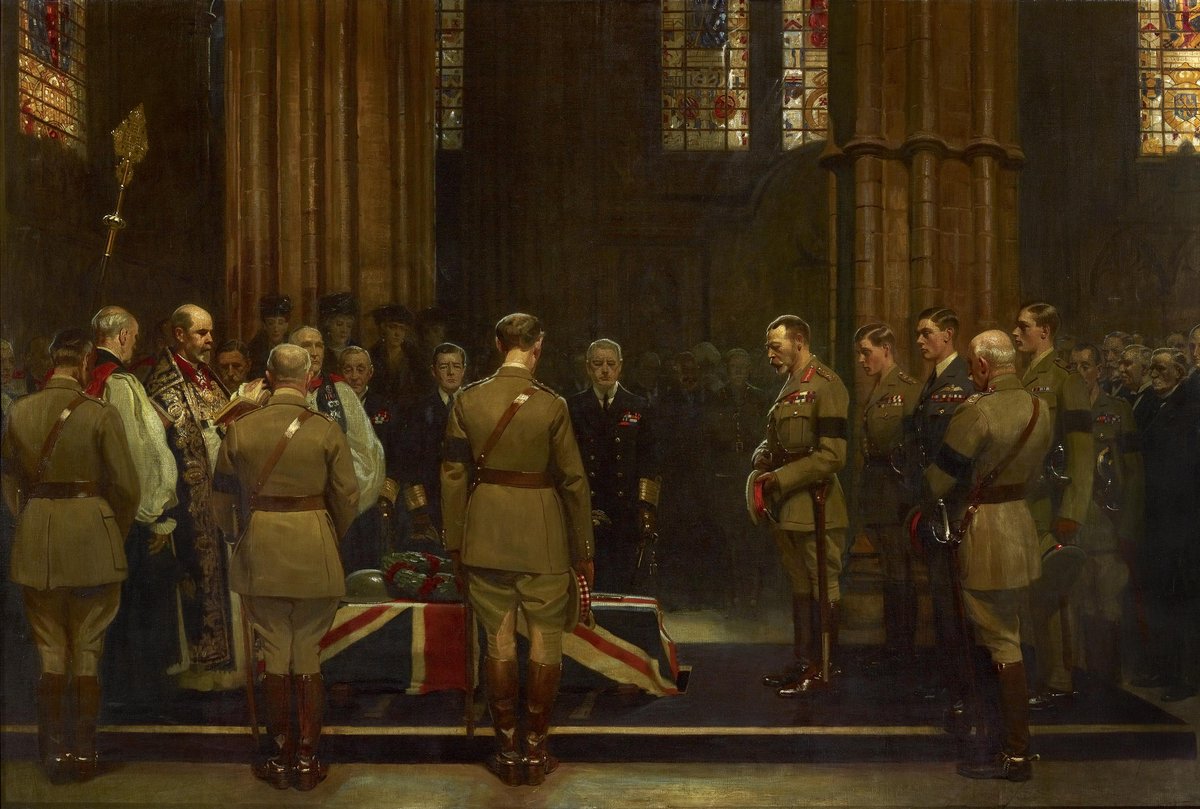
Visiting the Tomb of the Unknown Warrior at Westminster Abbey: A Complete Guide
Date: 14/06/2025
Introduction: Why Visit the Tomb of the Unknown Warrior?
The Tomb of the Unknown Warrior at Westminster Abbey is one of the United Kingdom’s most iconic and moving war memorials. It honors all British and Commonwealth servicemen who died during the First World War without a known grave. More than just a grave, this memorial is a national symbol of sacrifice, loss, and remembrance—offering a place for collective mourning and reflection for all who visit. This guide provides a detailed history of the Unknown Warrior, practical advice on visiting, and tips on making the most of your time at this extraordinary London landmark. (BBC History; Westminster Abbey; History.co.uk)
Table of Contents
- The Origins: Concept and Creation of the Unknown Warrior
- Selection and Secrecy: The Warrior’s Journey to London
- The State Funeral and National Mourning
- Symbolism and Inscription of the Tomb
- How to Visit: Hours, Tickets, and Accessibility
- Visitor Experience and Etiquette
- Guided Tours and Audio Guides
- Best Times to Visit and Special Events
- Tips for a Meaningful Visit
- Nearby Historical Attractions
- Frequently Asked Questions (FAQ)
- Conclusion and Further Resources
- References
The Origins: Concept and Creation of the Unknown Warrior
The idea for the Tomb of the Unknown Warrior was first proposed in 1916 by Reverend David Railton, a British army chaplain serving on the Western Front. Deeply affected by the numerous makeshift graves marked “An Unknown British Soldier,” he suggested creating a tomb for an unidentified serviceman to represent all those who died without a known grave. The idea resonated deeply in a grief-stricken nation, gaining support from the Dean of Westminster, Herbert Ryle, Prime Minister David Lloyd George, and, eventually, King George V. (Findmypast; The History Press)
Selection and Secrecy: The Warrior’s Journey to London
The selection process was shrouded in secrecy to maintain the soldier’s anonymity. On the night of November 7, 1920, several bodies of unidentified British servicemen were exhumed from key battlefields in France and Belgium, including the Aisne, the Somme, Arras, and Ypres. Brigadier General L.J. Wyatt, with eyes closed, chose one coffin at random from among the exhumed bodies. The other remains were reburied, and the selected coffin was placed in an oak casket, banded with iron, and topped with a medieval crusader’s sword. The body was then transported to London with great ceremony, arriving at Victoria Station before being moved to Westminster Abbey. (History.co.uk; Findmypast; The History Press)
The State Funeral and National Mourning
On November 11, 1920, the coffin of the Unknown Warrior was taken through the streets of London, accompanied by King George V and a guard of honor of 100 Victoria Cross recipients. At Whitehall, the King unveiled the Cenotaph before the procession continued to Westminster Abbey. The funeral service was attended by members of the royal family, government, military, and families of the fallen. The grave was filled with earth from French battlefields and covered by a black Belgian marble slab, engraved with a powerful inscription. In the week following, more than a million people visited the grave—a testament to the memorial’s deep resonance. (Military History Matters; BBC History)
Symbolism and Inscription of the Tomb
The tomb’s black Belgian marble slab is inscribed in brass letters:
“Beneath this stone rests the body
Of a British warrior
Unknown by name or rank
Brought from France to lie among
The most illustrious of the land
And buried here on Armistice Day
11 Nov: 1920, in the presence of
His Majesty King George V
His Ministers of State
The Chiefs of his forces
And a vast concourse of the nation…”
Surrounding the main inscription are biblical and poetic texts, including:
- “THE LORD KNOWETH THEM THAT ARE HIS”
- “GREATER LOVE HATH NO MAN THAN THIS”
- “UNKNOWN AND YET WELL KNOWN, DYING AND BEHOLD WE LIVE”
- “IN CHRIST SHALL ALL BE MADE ALIVE”
(Westminster Abbey; Waymarking)
It is the only grave in the Abbey on which it is forbidden to walk, emphasizing its unique significance. The tomb is often adorned with poppies during Remembrance events, and royal brides traditionally lay bouquets on the grave after their weddings. (The Tour Guy)
How to Visit: Hours, Tickets, and Accessibility
Opening Hours
Westminster Abbey is generally open to visitors Monday to Saturday, from 9:30 a.m. to 3:30 p.m. (last entry at 3:00 p.m.). It is closed to tourists on Sundays and during special services. Always check the latest opening times on the official website.
Tickets and Admission
As of 2025, ticket prices are approximately £27 for adults, with discounts for seniors, students, and children. Children under 6 enter free. Family tickets and group rates are available. Tickets should be booked online in advance to guarantee entry, especially during peak seasons. (The Tour Guy)
Accessibility
- Step-free access is available via the North Door.
- Wheelchairs are available free of charge.
- Assistance dogs are welcome.
- Accessible toilets and induction loops for hearing aids are provided. Visit the Westminster Abbey accessibility page for more details.
Visitor Experience and Etiquette
- Location: The Tomb of the Unknown Warrior is in the Nave, just inside the Great West Door.
- Respect: Visitors are asked to pause quietly and not walk on the grave.
- Photography: Personal photography is permitted (no flash/video) except during services.
- Dress code: Modest attire is appropriate as the Abbey is an active place of worship.
- Security: Bag checks are standard; large bags are not permitted.
- Facilities: Restrooms, a café, and a gift shop are available on site.
Guided Tours and Audio Guides
Enhance your visit with a guided or audio tour, available in multiple languages and included with most ticket types. Specialized tours delve deeper into the Abbey’s history, including the story of the Unknown Warrior and other notable memorials. Verger-led tours can be arranged on the day for an additional fee. (The Tour Guy)
Best Times to Visit and Special Events
- Best times: Early morning or late afternoon on weekdays for a quieter experience.
- Avoid: School holidays and around Remembrance Day (November 11), when the Abbey is busier due to special services.
- Annual events: The Tomb is a focal point for Armistice Day and Remembrance Sunday, attracting crowds, including national and royal dignitaries. (Discover Walks)
Tips for a Meaningful Visit
- Book tickets in advance and check for any special closures.
- Allow at least two hours to explore the Abbey and nearby sites.
- Pause for reflection at the Tomb and observe the etiquette of the site.
- Make use of audio guides or join a tour for deeper historical context.
- Combine your visit with other nearby attractions such as the Houses of Parliament, Churchill War Rooms, and St James’s Park.
Nearby Historical Attractions
- The Cenotaph, Whitehall: Unveiled on the same day as the Unknown Warrior’s burial.
- Buckingham Palace and The Mall: Part of the Warrior’s funeral procession route.
- Imperial War Museum: Extensive First World War exhibits.
- Churchill War Rooms: Experience Britain’s wartime command center.
- Big Ben and Palace of Westminster: Iconic London landmarks adjacent to the Abbey.
Frequently Asked Questions (FAQ)
Q: What are the visiting hours for the Tomb of the Unknown Warrior?
A: Generally, Monday to Saturday, 9:30 a.m. to 3:30 p.m.; closed on Sundays and during special services.
Q: How much are tickets?
A: About £27 for adults, with concessions for seniors, students, and families. Children under 6 are free.
Q: Is the Tomb accessible for wheelchair users?
A: Yes. Step-free entry, wheelchairs, and accessible facilities are provided.
Q: Can I take photographs?
A: Yes, for personal use (no flash or video), except during services.
Q: Are guided tours available?
A: Yes. Guided and audio tours are highly recommended and can be booked in advance or arranged on-site.
Conclusion
The Tomb of the Unknown Warrior is more than a historical artifact—it is a living symbol of sacrifice, unity, and national memory. Its unique place among monarchs and historic figures at Westminster Abbey reflects the value placed on every life lost in war, regardless of rank. By planning your visit in advance and respecting the site’s solemn significance, you can experience a profound connection to Britain’s past and the continuing story of remembrance.
For up-to-date information, downloadable audio guides, and more tips for exploring London’s historic sites, download the Audiala mobile app, and follow Westminster Abbey’s channels for events and news.
Visuals and Media
 Alt text: Tomb of the Unknown Warrior covered by black Belgian marble in Westminster Abbey, London.
Alt text: Tomb of the Unknown Warrior covered by black Belgian marble in Westminster Abbey, London.
Take a virtual tour of Westminster Abbey
Internal Links
References
- BBC History: The Unknown Warrior
- Westminster Abbey: Buried Among the Kings
- History.co.uk: Unknown by Name or Rank
- The History Press: The Final Journey of the Unknown Warrior
- Findmypast: The Tomb of the Unknown Warrior
- Waymarking: Unknown Warrior at Westminster Abbey
- Military History Matters: The Unknown Warrior 1920
- The Tour Guy: Top Things to See in Westminster
- Discover Walks: Facts about the Unknown Warrior
Plan your visit, honor the memory, and experience one of London’s most meaningful historic sites.

